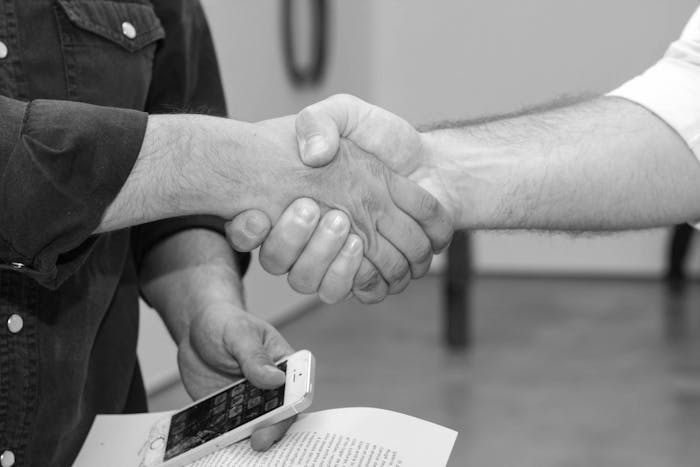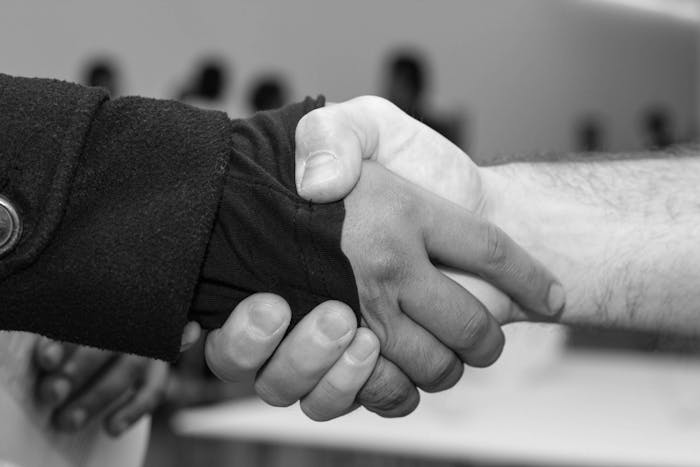Measuring a space with one’s footsteps, and immortalising that walk in cement or plaster, sweeping clean the entire gutter of 5th Avenue with a dustpan and brush, or walking along the boundary of the outskirts of Brussels dressed in a costume in the colours of the Belgian flag: these are just a few of the performances Ištvan Išt Huzjan (°1981, Ljubljana, Slovenia, lives and works in Brussels and Ljubljana) has carried out to date. On the occasion of his solo presentation in the Mexican gallery PROYECTOSMONCLOVA, we sought out the artist in the centre of Brussels.
Anne-Marie POELS
Ištvan Išt Huzjan is busy: late February he was awarded the Opening Award, the prize for best solo exhibition at ARCO Madrid, and when we catch up with him he is doing colour tests for his next exhibition at Gaep in Bucharest, after which he is due to return to Brussels for his presentation at Art Brussels.
Your work is grounded in performance art.
Ištvan Išt Huzjan: “Yes, that allows me to position myself in relation to a historical context. For an exhibition at James Gallery on 5th Avenue in NYC, for instance, I completely cleaned the gutter of that avenue in ‘Daily Chores on 5th Avenue’. Among the places I passed was the museum mile; I cleaned up in front of the MET and the Guggenheim, MoMA, the New York Public Library, Trump Tower – Trump had just taken the oath two weeks earlier –, the Empire State Building, Washington Square Park where all the minimalists used to live... I was passing close to all this history, and in so doing I positioned myself in relation to all that history too. And in so doing I am also referring to other artists who already put forward cleaning as a performative act, like Mierle Laderman Ukeles who cleaned the museum floor, or Marina Abramovic who scrubbed bones.”
But it’s not just the performances.
Huzjan: “No, I process them in three ways. I document them in a series that I call ‘Photograph and text’. Those photographs are always black and white, because in that way they automatically refer to something that happened in the past, and obtain a certain uniformity that makes them resemble each other more. And the text describes what happened. I additionally make a series of books that are called ‘Mera’ or ‘Measuring’ – because in those performances I am actually taking measurements. And for the rest I collect objects during the performances, which I later incorporate into sculptures. For example, a stick that I used as a walking stick and that I later recast in plaster with a mould.”
Those walks, or the other performances, what drives you to do those?
Huzjan: “All the ideas for my performances come from daily activities. We all do cleaning, all of us pay visits sometimes, we all fold up our socks once we have washed and dried them... If such an activity has a performative character and I see an artistic value in them, I will adopt it. But when I do a performance somewhere, I always take the broader political and historical context into account, as I did in NY. Or, last year, during A Performance Affair in Brussels, where I wandered along the regional boundary that makes Brussels into a kind of enclave in Flanders, dressed in a costume in the colours of the Belgian flag: that walk not only referred to the situation in Brussels itself, but also to my personal history in Ljubljana. During WWII that city was sealed off from the outside world by the Italians, because there were many partisans there. Each year on liberation day the inhabitants walk along a path that encircles the city to remember that history – I grew up with that.”
What is your solo at Art Brussels going to look like?
Huzjan: “At the fair I will be showing the third Mera, ‘Thank you all for coming’. That was a performance I did during my solo show ‘From metric to imperial’ in PROYECTOSMONCLOVA in Mexico-City. Because it was my first exhibition in Central America, I wanted to introduce myself during the opening by shaking the visitors’ hands – in total I must have shaken about a hundred hands. Tina Javornik photographed all those handshakes close-up and they ended up in the book. Purely visually, a kind of horizon occurs – the line as visual element does recur a lot in my work. The 92 photographs are presented on the walls in three rows – of which the middle one is at my own eye-level. The book is just like ‘I. Mera’ and ‘II. Mera’, and will be laid on three tables that I have designed: they have slanting tabletops that are positioned in such a way that the public can have some privacy and can move around them.”
You spoke of that horizon line, the visual aspect of the work. But there was also a conceptual context.
Huzjan: “In ‘From metric to imperial’ in Mexico-City I was dealing with the shaking of hands and the horizon. That was at a moment in time – we had already entered the era of the Trump administration – during which a heated discussion was underway between Mexico and the US (about the building of the wall and migrant access, amp). I am in other words making reference to a political situation.”
A fair is a very specific environment. Are you able to sufficiently convey there what is happening during such a performance?
Huzjan: “It helps of course that I have a solo show. In a group presentation -of the kind that is usually seen in an normal booth – the public is far less prone to be absorbed by work of this kind. But the beautiful thing about exhibiting at a fair – and people rarely speak about this – is that you have someone there, permanently, for a few days, who can explain everything to you.”
“With this kind of presentation it is not my intention to question the fair format. We did that with Artists Club Coffre-Fort (an artists’ initiative that Huzjan founded together with Thibaut Espiau and Gregoire Motte, amp). In my opinion, good or bad places for art do not exist: sometimes a work can come entirely into its own at a fair, and sometimes a fair can be detrimental to it – but the same holds true for any art space; an artwork can also be ‘destroyed’ in a museum. It is simply a matter of keeping in mind for which type of space you are making your work.”
Dit artikel is digitaal nog niet volledig beschikbaar. We werken aan ons archief.


